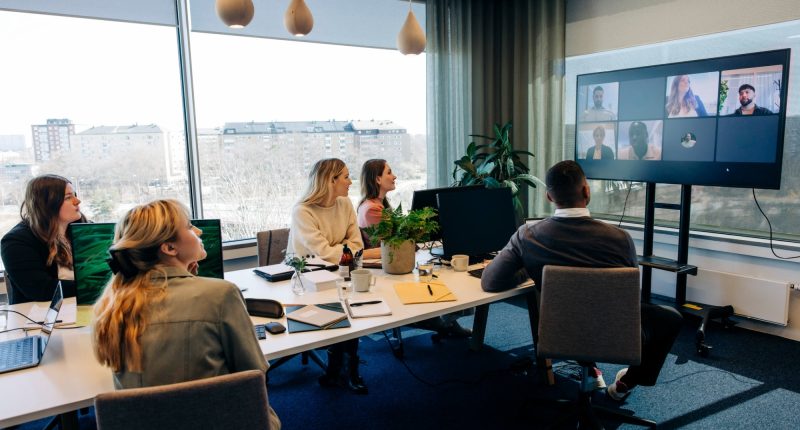
Opinions expressed by Entrepreneur contributors are their own.
In the bustling marketplace of global business, American practices shine as a lighthouse of innovation, adaptability and advancement. Renowned for being the most advanced, they have been exported and embraced across continents. A recent survey conducted by the INSEAD Emerging Markets Institute and Universum provides a tapestry of insights into how American flexibility is redefining business practices worldwide. Similar information comes from a survey published in the Harvard Business Review, called the Survey of Business Uncertainty and jointly run by the Atlanta Federal Reserve Bank, the University of Chicago, and Stanford, which surveys senior executives at roughly 500 U.S. businesses across industries and regions each month.
Flexibility and return to the office
America’s approach to flexibility is not just an operational strategy; it’s a cultural ethos. The U.S., known for its innovative spirit, has long been a pioneer in adapting to new work landscapes. With the INSEAD survey finding that 50% of U.S. respondents rated remote productivity as 5/5, the embrace of flexible work arrangements has become a defining characteristic of American business. This isn’t a fleeting trend but a foundational shift that has resonated across the globe.
In the APAC region, the longing for physical office spaces is like an ode to community and hierarchy. Indeed, peer-reviewed research published in Knowledge and Process Management shows that Asian collectivism impedes remote work. But even here, America’s flexible approach is making inroads, creating a hybrid model that balances traditional values with modern efficiency.
Europe finds itself at a crossroads, aligning with both traditional office culture and the new frontier of remote work. It’s a dance between the old and the new, with the American influence acting as the choreographer, creating a harmonious blend.
The low levels of return to office in the U.S. are not just a response to current circumstances; they are a blueprint for a new way of working. This success story has become an export, a lesson plan for businesses around the world looking to adapt, innovate and thrive.
From boardrooms in Sydney to startup hubs in Berlin, the ripples of American flexibility are being felt. The influence goes beyond mere imitation. The perceived ideal mix of days working at home versus in the office reveals a global conversation shaped by American influence. APAC, EMEA, and the Americas are crafting unique blends, reflecting regional needs and global trends. America’s leading role in this conversation is evident, setting the stage for a future where flexibility is the norm, not the exception.
Indeed, the Harvard Business Review article points out that American business practices are recognized widely as the best around the world, which paves the way for broader adoption of remote work worldwide. The most recent iteration of the survey, conducted in July 2023, asks, “Looking forward to five years from now, what share of your firm’s full-time employees do you expect to be in each category [fully in-person, hybrid, fully remote] in 2028?” The current share of in-person, hybrid, and remote workers is 75%, 14%, and 10%. In 2028, the 500 executives expect the share of in-person, hybrid, and remote workers to be 73%, 16%, and 11%. So, despite the extensive headlines about returning to the office after Labor Day, the reality is that the future will see more flexible work in the U.S., not less. And if the future is more flexible work in the U.S., it means the future is more flexible work globally as well.
Remote productivity — the American blueprint
In the Americas, 50% of respondents rated remote productivity as 5/5, a statistic that speaks volumes about the confidence and competence with which American businesses have adopted this new paradigm. This success story isn’t confined within national borders; it’s a lesson being studied and applied worldwide.
American businesses have bridged the physical gap with technology and innovation. From cutting-edge collaboration tools to advanced cybersecurity measures, the technological prowess of American companies has enabled a seamless transition to remote work. This technological blueprint is now being exported, guiding global businesses in building their virtual bridges.
Regions like APAC and EMEA have their unique cultural contexts, but the American model of remote productivity is influencing these landscapes. The lessons learned from America’s success are helping these regions navigate the challenges and opportunities of remote work.
The lower concerns about productivity in the Americas (11%) compared to APAC or EMEA (both 22%) aren’t just numbers; they’re a reflection of a well-crafted approach that balances efficiency and wellbeing. American businesses have not only maintained productivity but have enhanced it, creating an environment where employees thrive. This balanced approach is a model for global businesses seeking to create a productive and healthy remote work culture.
American businesses have shown remarkable agility in adapting to the remote work environment. This agility is not reactive but proactive, driven by a vision of a future where work is not confined to physical spaces. The adaptability of American businesses is a guiding star for global companies seeking to be future-ready. That’s what I observe in my 5-10 conversations with global leaders every week who are trying to figure out how to adapt the best practices in the U.S. for hybrid work to their own contexts so as to boost productivity while improving retention and cutting costs.
The human aspect — beyond technology
Happy employees make thriving businesses. The Americas, with their flexible approach, score high on engagement (3.6/5), while EMEA and APAC lag (both 3.2/5). It’s a dance of satisfaction, where the rhythm of flexibility creates a joyous performance.
High employee engagement in the Americas is more than a metric; it’s a philosophy. It reflects a commitment to creating a work culture where employees feel valued, connected, and empowered.
The embrace of remote work in the United States is not merely a technological triumph; it’s a human achievement. It’s about creating virtual spaces that foster connection, collaboration, and community. It’s a holistic approach that recognizes that business is not just about transactions but about relationships.
In the American business landscape, emotional intelligence is no longer a soft skill; it’s a vital asset. Leaders are learning to navigate virtual spaces with empathy, understanding, and compassion. They are not just managing tasks but nurturing teams, building trust in an environment where face-to-face interactions are limited.
American businesses have recognized that remote work, while offering flexibility, also presents challenges to mental wellbeing. Initiatives focusing on mental health, work-life balance, and employee wellness are not just trends; they’re integral to the American approach to remote work. They reflect a deep understanding that productivity and wellbeing are intertwined.
American companies are pioneering ways to build virtual communities that transcend the screen. From virtual coffee breaks to online team-building activities, they are crafting experiences that replicate the camaraderie and collaboration of physical offices. These practices are lessons for the world on how to turn virtual spaces into vibrant communities.
Recognition and rewards are taking new forms in the virtual world. American businesses are innovating in celebrating successes, acknowledging efforts, and fostering a culture of appreciation. These practices are inspiring global businesses to reinvent their recognition strategies in a remote work environment.
The concern about missing social connections is not unique to the Americas (78%), but the way American businesses are addressing this concern is noteworthy. They are not just connecting employees; they are reconnecting humanity in a virtual world.
Mentorship and collaboration have found new expressions in the American virtual workspace. Mentorship is no longer confined to office corridors but extends across digital platforms. Collaboration is not just about projects but about shared learning, growth, and innovation.
American businesses are leveraging remote work to foster diversity and inclusion. Remote work is not just breaking down office walls; it’s breaking down barriers and creating a global family that celebrates diversity, inclusivity and unity.
Conclusion: The dawning of a shared era
The tale of American flexibility is not a chapter in a national story; it’s a volume in the annals of global business. Renowned for being the most advanced, American practices are not merely setting standards; they are weaving a narrative of shared growth, mutual respect and universal adaptability.
As businesses across the globe learn from America’s wisdom, they too will evolve, becoming more flexible, more connected, more human. This shared journey towards a brighter, more resilient future is not mere imitation; it’s evolution, it’s collaboration, it’s the dawn of a new era.
This snapshot, rich and insightful, is a window into a world that’s continually transforming, guided by the pioneering spirit of America’s expertise and vision. The world is on the brink of a new age, and America’s advanced practices are the compass, the guide, the inspiration.
The future is not just flexible; it’s united, it’s promising, and it begins here. Let us not just observe this transformation but be part of it, guided by wisdom, enriched by diversity, and united by a common goal. The curtain is rising, the world is watching, and the show is only just beginning.
This article is from Entrepreneur.com









